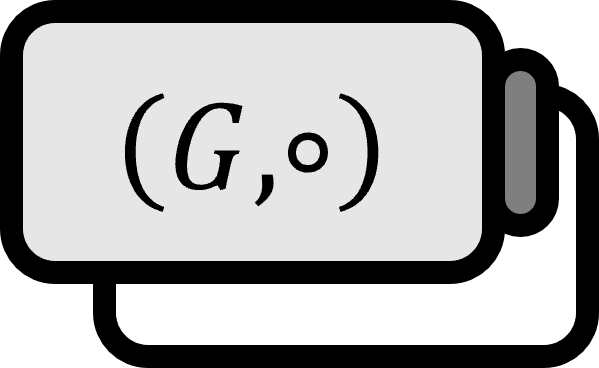Zeros of a Polynomial Function
Definition 1
$$ f(x) : = \sum_{k=0}^{n} a_{k} x^{k} = a_{0} + a_{1} x + \cdots + a_{n} x^{n} $$ Let us define the evaluation function $\phi_{\alpha} : F [ x ] \to E$ in $\alpha \in E$ for a polynomial function $f \in F [x]$ and a field $F \le E$ as follows. $$ \phi_{\alpha} ( f(x) ) : = a_{0} + a_{1} \alpha + \cdots + a_{n} \alpha^n = f (\alpha) $$ $f( \alpha ) = 0$ satisfying in $\alpha \in E$ is called the zero $f(x)$ of $f(x)$.
Explanation
Evaluation Function
As a fact, $\phi_{\alpha}$ becomes a homomorphism.
If the definition feels too vague, consider the simple example of $\phi_{i} : \mathbb{R} [ x ] \to \mathbb{C}$. For instance, if we have $\phi_{i} ( x^2 - 3 x + 2)$, it simply becomes $$ f(x) = x^2 - 3 x + 2 $$ by substituting $i$ into $$ i^2 - 3 i + 2= 1 -i2 \in \mathbb{C} $$ Of course, it does not matter if $\mathbb{R} \le \mathbb{C}$.
Motive of Zero
Thinking of kernel, $\ker ( \phi_{\alpha} )$ would be a set of functions satisfying $f(\alpha) = 0$. Continuing with the above example, elements of $\ker ( \phi_{i} ) \subset \mathbb{R} [ x ]$ would be polynomial functions that have $(x-i)$ as a factor.
Thus, it is undoubtedly natural to call $\alpha$ the zero of $f(x)$ when satisfying $f( \alpha ) = 0$. Equivalently, if $\phi_{\alpha} ( f(x) ) = 0$ then $\alpha$ is said to be the zero of $f(x)$.
The reason for explaining the concepts of substitution and roots by involving functions is precisely to define the concept of ‘solution of equation’ rigorously. $$ f(x) = g(x) $$ Consider the equation above, for instance. There’s no reason not to think of a set of such equations, but it’s much more straightforward to consider $f(x)$ and $g(x)$ separately rather than collecting relations. If a set of equations $X$ is a collection of such equations, it should be able to be expressed as $$ \left( f(x) = g(x) \right) \in X $$ But after all, since reducing it comes down to $$ f(x) = g(x) \iff f(x) - g(x) = 0 $$ there’s no need to keep the right side messy and free. Having the set $X$ follow a structure that holds functions rather than equations, and having interest in when they hold, is no different than collecting equations with $0$ on the right side.
This expansion of thought will lead to facts such as ‘polynomial functions with real coefficients can have imaginary roots’ being abstracted and generalized.
Fraleigh. (2003). A first course in abstract algebra(7th Edition): p201, 204. ↩︎
